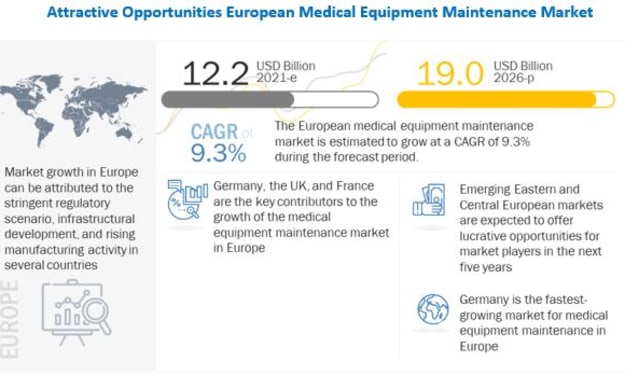Phoenix Resurgence: Rebuilding Your Business from the Ground Up in 2024
Strategic Steps, Adaptive Measures, and Reshaping Your Entrepreneurial Destiny

The Strenuous Road to Success: Lessons Learned
Dissect the trials of 2023 with surgical precision in retrospect. Determine particular difficulties and measurable measures that define your company's landscape. For example, if you had a dip in sales, calculate the percentage drop and correlate it with marketing activities. Consider the following:
Specificity (S): What were the quantifiable problems that severely impacted my firm in 2023, such as the percentage decline in revenue or consumer engagement?
Measurability (M): How can I quantify the efficacy of my marketing initiatives and identify areas for improvement?
Achievability (A): What practical improvements can I make to reverse the downward trend and, if necessary, set a quantifiable objective for greater sales or engagement in 2024?
Relevance (R): How do these identified challenges fit in with my overall business goals, and how do they impede my progress?
TIME-BINDED (T): By what deadline do I want to see improvements in these identified measures, and how will I track progress?
Managing Your Mental Health on the Entrepreneurial Rollercoaster
Recognize the emotional cost of entrepreneurship. Dive deeper into the mind and the pressures that affect mental health. Tracking stress levels or applying mindfulness practices are examples of quantitative measures. Consider the following:
Strictness (S): What specific components of my entrepreneurial experience have resulted in increased stress or burnout, and how can I assess these pressures objectively?
Measurability (M): Are there quantitative markers of the influence of entrepreneurship on my mental health, such as hours worked or sleep quality?
Achievability (A): What practical self-care activities can I implement into my routine, and what measurable changes in my mental well-being do I hope to achieve by the end of 2024?
Relevance (R): How does addressing mental health fit into my overall business success, and what benefits can it have on productivity and decision-making?
Time-Bound (T): When will I include these mental health activities into my daily routine, and what benchmarks can I set to ensure constant development over the year?
The Step-by-Step Guide to Recovering in 2024
1. Evaluation and Introspection:
Conduct a thorough examination of the previous year, focusing on real data. Assess the efficacy of marketing channels, product lines, and client acquisition expenses. Establish key performance indicators (KPIs) such as customer acquisition cost (CAC) and return on investment (ROI). Consider the following:
Specificity (S): What specific data points can I collect to evaluate the efficacy of my marketing channels, and how can I calculate the ROI for each?
Measurability (M): How can I objectively estimate the success of my products or services in terms of consumer satisfaction, and what key performance indicators (KPIs) can help?
Achievability (A): What modifications in marketing methods or product offers are feasible, and what percentage increase in CAC or ROI am I aiming for in 2024?
Relevance (R): How do these assessments fit in with my overall business goals, and what strategic changes are required to solve identified challenges?
Time-bound (T): When will I perform a mid-year and year-end review to assess progress against these defined KPIs and alter strategies as needed?
2. Rebranding and Repositioning:
Think about a comprehensive rebranding approach that begins with an examination of your target demographic. Use analytics tools to learn about your customers' demographics and preferences. Create a customer persona and link your brand messaging with it. Consider the following:
Specificity (S): What specific demographic data can I gather to help me better understand my target audience, and how can I use this information to alter my brand messaging?
Measurability (M): How will I assess the impact of rebranding on customer engagement, and what specific KPIs, such as website traffic or social media interactions, can provide insight into its success?
Achievability (A): What rebranding aspects are realistic to deploy, and what percentage improvement in customer engagement or brand recognition do I want to achieve by 2024?
Relevance (R): How does rebranding connect with the preferences of my target audience, and what market gaps can I fill through strategic branding changes?
TIME-BINDED (T): When will I deploy the rebranding plan, and what metrics will I use to measure its success in the first and second quarters of 2024?
3. Leveraging Social Media:
Strategically harness the power of social media. Keep an eye on KPIs like engagement rates, follower growth, and conversion rates. To determine the efficiency of your material, use analytics tools on networks such as Instagram. Consider the following:
Specificity (S): What precise measures, such as engagement and conversion rates, can I track on social media sites to assess the effectiveness of my content?
Measurability (M): What KPIs can I use to track the success of specific campaigns or posts, and how can I quantify the increase of my social media following?
Achievability (A): What changes can I make to better my social media strategy, and what % improvement in engagement or conversion rates do I want to achieve by 2024?
Relevance (R): How do my social media activities correspond to my overall brand message, and what distinctive value does my material provide to my target audience?
Time-bound (T): When will I undertake a monthly assessment of social media analytics, and what specific actions will I take based on the insights acquired in order to continuously optimize my strategy?
4. Establishing Strategic Partnerships:
Look into collaborations inside your sector, with influencers, or with firms that compliment your offerings. Establish collaborations that are consistent with your brand's ethos and benefit all parties involved. Consider the following:
Specificity (S): Can I create specific criteria for potential partnerships that connect with my brand values and compliment my products or services?
Measurability (M): How can I evaluate a partnership's effectiveness in terms of improved brand visibility, customer acquisition, or sales?
Achievability (A): What joint actions are short-term achievable, and what precise goals can I establish for partnership-related outcomes in 2024?
Relevance (R): How do potential collaborations connect with my business goals, and what distinctive value might they bring to my customers?
Time-bound (T): When will I aggressively pursue and initiate partnership discussions, and what benchmarks can I create to measure the success of these collaborations throughout the year?
5. Customer Feedback and Adaptation:
Recognize and value customer feedback. To acquire information, use techniques such as surveys, reviews, and direct conversation. Based on this feedback, quantify improvements to products or services. Consider the following:
Specificity (S): What specific channels can I use to actively collect client feedback, and what metrics or key performance indicators (KPIs) can I utilize to quantify their levels of satisfaction?
Measurability (M): How can I quantify the influence of consumer feedback on product modifications, and what specific indications can I monitor to gauge progress?
Achievability (A): Based on customer input, what actionable adjustments can I realistically make to my products or services, and what % increase in customer happiness am I aiming for in 2024?
Relevance (R): How does the adaptation of products or services connect with my target audience's changing needs and preferences, and how may it improve their overall experience?
Time-Bound (T): When will I review customer feedback on a frequent basis, and what timetables can I create for executing changes based on this feedback to ensure a continuous cycle of improvement?
6. Financial Restructuring:
Review your financial plans with an eye on measurable results. Set explicit financial objectives, such as lowering spending by a certain percentage or increasing profit margins. Consider the following:
Specificity (S): What specific areas of my company's finances can I analyze to uncover chances for expense reduction or revenue growth, and what quantitative measurements might help drive this evaluation?
Measurability (M): How can I assess the success of financial restructuring initiatives in terms of higher profit margins, lower expenses, or higher cash flow?
Achievability (A): What realistic improvements can I make to my financial plans, and what percentage increase in profit margins or expense reductions do I hope to achieve by 2024?
Relevance (R): How does financial restructuring fit into the broader sustainability of my business, and what long-term financial goals may these adjustments help to achieve?
Time-bound (T): When will I conduct a quarterly evaluation of financial performance, and what precise checkpoints can I create to ensure that financial restructuring measures are implemented on time throughout the year?
Acceptance of Resilience and Growth
Remember that success is a convergence of strategic decisions, resilience, and a dedication to continual improvement as you continue on the quest to resurrect your failing firm in 2024. Use SMART questions to assist you along the way, making sure that each step is Specific, Measurable, Achievable, Relevant, and Time-Bound. By doing so, you empower yourself to not only overcome previous problems, but also to thrive in the face of adversity, paving the way for long-term success and progress. Here's to a revolutionary year in which your company rises from the ashes to new heights of profitability.

Hello there! I’d like to be completely honest with you about what you might find in this blog article. It contains my personal opinions, affiliate links, and even articles created with the use of AI technologies. Now, about those affiliate links: if you decide to make a purchase after clicking on them, this blog may receive a commission. But here’s the thing: I’m all about providing you with the most useful and unbiased information possible, and I’m not hiding anything from you. Your confidence means a lot to me.
Please check out my previous article here: Rising From the Ashes: A Step-by-Step Plan for Rebuilding Your Failing Business in 2024
Follow me on Vocal here: @courtanaeheslop
Hire me on Upwork here: @courtanaeheslop
Chat with me on whatsapp: +1–876–830–4520
Pinterest: @courtanaewrites
Follow the LinkedIn page: The Literary Network
Connect with me on Linkedin: @courtanaewrites
I started by UGC Journey, My tiktok handle for UGC is: @ugccourtanae

About the Creator
Courtanae Heslop
Courtanae Heslop is a multi-genre writer and business owner.
Enjoyed the story? Support the Creator.
Subscribe for free to receive all their stories in your feed. You could also pledge your support or give them a one-off tip, letting them know you appreciate their work.






Comments
There are no comments for this story
Be the first to respond and start the conversation.